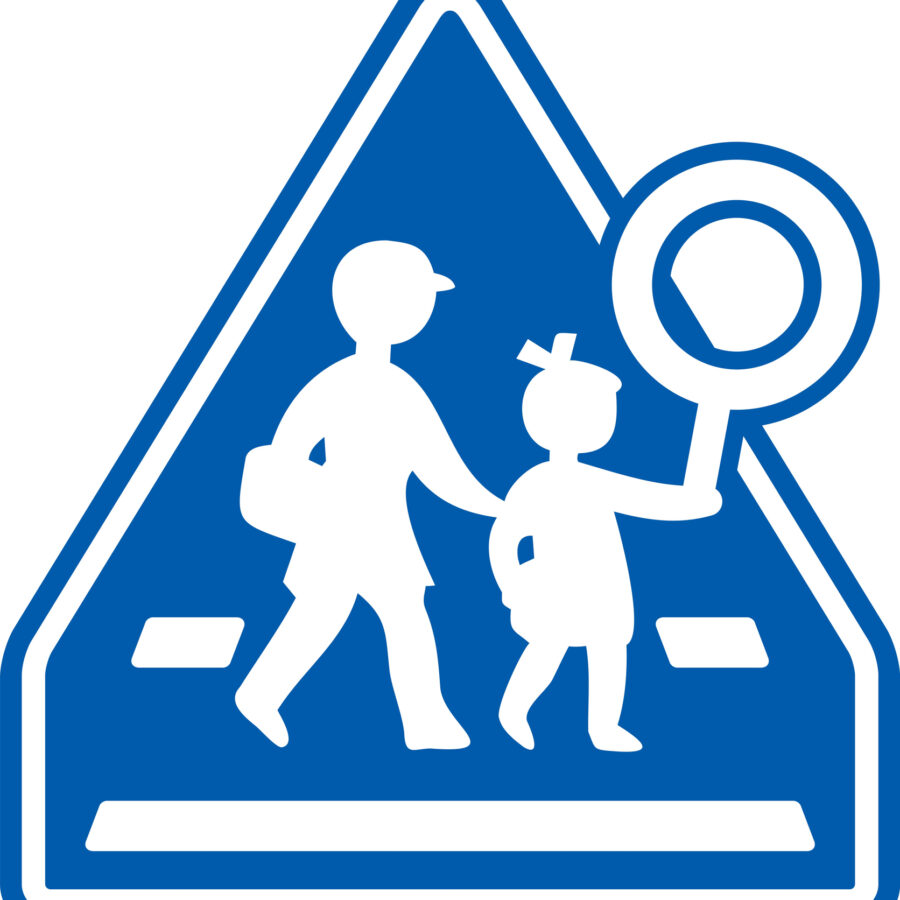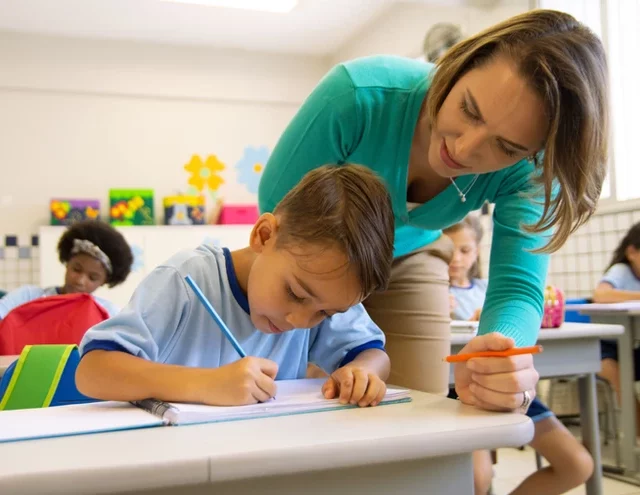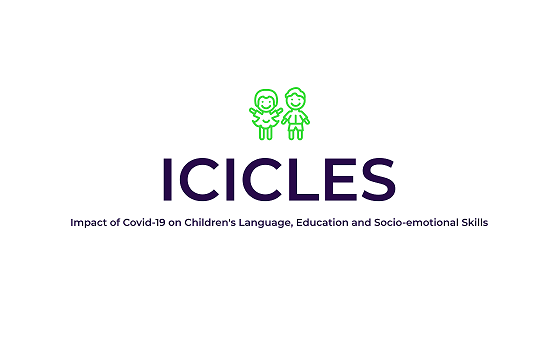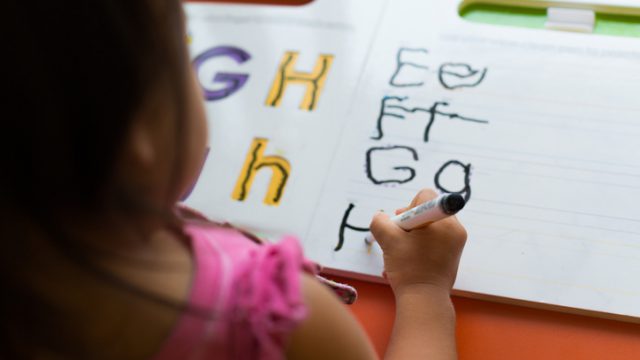What Can Be Done To Better Protect Children and Young People From Serious Safeguarding Incidents?
With the annual report of the Child Safeguarding Practice Review Panel (CSPRP) recently published, our Assistant Social Researcher Sophie Kitson speaks to our Senior Social Researcher Ekaterina Aleynikova about what its findings, alongside NIESR’s research, tell us about the challenges schools face in supporting vulnerable children.

What are the key findings of the annual report of The Child Safeguarding Practice Review Panel?
The latest annual CSPRP report reviewing evidence from serious safeguarding incidents that occurred between January 2022 and March 2023 has just been published, and it highlights the continued challenges facing child safeguarding systems in England. The Panel reviews safeguarding practices annually, with the aim of improving responses from the national government and local safeguarding partners, to better protect vulnerable children. The latest report builds on the six key areas for practise improvement identified in the 2022 report, as well as identifying six emerging themes that highlight specific groups that need improved support. Key challenges and risks included insufficient agency funding and subsequent workforce crises, the continued need for better information sharing between agencies, and the urgency for increased domestic abuse expertise amongst practitioners.
Recruitment and retention challenges have been felt across many key child protection services, including policing and children’s social care and health. The latest CSPRP report highlights that the loss of senior police personnel has meant a loss in expertise in how to appropriately manage and respond to serious safeguarding incidents. At the same time, recruitment challenges in social care have led to an over-reliance on agency workers, creating situations of disjointed care and a lack of ongoing relationships between families and case workers that are key to building trust and effective safeguarding (CSPRP, 2020).
To alleviate pressures on any one agency, there’s a perennial need for a more ‘joined-up’ approach between agencies. Early interventions can be vital in preventing the escalation of safeguarding incidents, and this requires cohesive multi-agency working to properly resource support for children and families (DfE, 2023). However, safeguarding reviews consistently highlight that England is currently falling short in this aspect. There is a disconnect between services, and the need for “greater collective will to think and act together, both nationally and locally” (CSPRP 2023, referenced in CSPRP 2024).
There is also a need for increased involvement of schools in multi-agency safeguarding (Ofsted, 2023), particularly for early intervention. The reviews analysed for the 2024 CSPRP report show that schools can help to identify safeguarding concerns early, recognise escalation, provide safe spaces for children and opportunities to build trusting relationships with children and their families, which are key to protecting vulnerable children. However, the report highlights that insufficient information sharing between agencies is a persistent barrier to schools’ being able to provide this support.
“Limitations in information sharing meant that key agencies were not always aware of domestic abuse within families, where they may have had important information to share or a role to play. Examples included nurseries, schools and health services not always being aware of domestic abuse concerns” – CSPRP, 2024 p.88.
No or insufficient information sharing with schools can lead to missed response opportunities, or actions taken that could be either untimely or inappropriate.
In 2021, the Domestic Abuse Act introduced the legislative recognition of children as victims of domestic abuse in their own right, classing them as victims if they see, hear or experience the effects of domestic abuse. In response, the annual CSPRP report from 2022 introduced ‘Domestic abuse and harm to children – working across services’ as one of its six key practice improvement areas. This further detailed the need for better information sharing between agencies to effectively respond to, and prevent, domestic abuse safeguarding incidents.
The latest CSPRP report builds on this finding, detailing that in 50% of safeguarding cases where a child died or was seriously harmed between April 2022 to March 2023, there was a presence of domestic abuse within the household (CSPRP, 2024 p.46). The report added that another barrier to effective domestic abuse safeguarding responses is insufficient expertise of domestic abuse by practitioners, and highlighted again the urgent need for continued practise improvement around domestic abuse. Foundations has subsequently made domestic abuse one of their priority areas, with a focus on evaluating interventions that provide support for children.
How do these findings relate to the findings of our research?
In 2022-2023, NIESR evaluated four programmes whereby experienced social workers gave supervision to Designated Safeguarding Leads (DSLs) in schools. These evaluations were funded by the Department for Education via Foundations, with programmes aiming to better equip schools to respond to safeguarding incidents. In June 2023, NIESR published the report which aimed to explore the experiences of DSLs in identifying and responding to domestic abuse instances, and the effect (if any) that these supervision sessions had on schools’ safeguarding practices. There were certainly similarities in the findings of our evaluations and the CSPRP reports, particularly around the need for better understanding of domestic abuse amongst practitioners and the importance of multi-agency approaches and information sharing.
Our research again highlighted the vital role that schools can play in providing early intervention, recognising signs of abuse and escalation, and encouraging disclosures though trusting relationships with children and families.
“We very much rely on having good relationships with our families so that they trust us that if there is something like domestic [abuse] that’s happening, they are able to say that it’s happening, and we can then respond accordingly.” – DSL.
However, similarly to the workforce challenges in social care and policing, we also noted the challenges facing the education sector workforce, and how DSLs can equally be overworked and miss signs due to high workloads and loss of experienced staff.
Another challenge to DSLs was feeling they lacked expertise in how to recognise and respond to domestic abuse. Our survey data highlighted that 20% of secondary school DSLs participating in the programmes reported having received no previous training in domestic abuse in the three years prior to the survey. The majority also reported that they had not received any standalone training specific to domestic abuse. This lack of specific training meant that DSLs often did not feel confident in their ability to recognise and respond appropriately to cases of domestic abuse.
Our research further demonstrated the importance of a multi-agency approach in addressing serious safeguarding concerns. Whilst schools can be an effective place to build relationships with children and families, and to notice signs of abuse, there needs to be collaboration with social care and other agencies to appropriately respond to these cases. Our results showed that DSLs having regular supervision sessions from a social worker had a ‘positive impact’ on their knowledge and confidence in identifying and responding to domestic abuse cases.
“She [the supervisor] said, ‘Well that [example] could indicate that something more is happening at home, so, that could be explored.’ So, she’s been able to pick up on indicators that I might not have been aware of, just from that more generalised training .” – DSL.
Multi-agency responses also helped in providing early intervention in schools. Some DSLs described receiving notifications from the police after officers attended a domestic abuse incident at which a child from the school was present. DSLs found these notifications extremely useful as they helped to improve their awareness of when additional attention or action may be needed to support a particular child. However, some DSLs also highlighted that the alerts varied in the amount of detailed information they contained, which led to them feeling unsure whether they were taking appropriate actions to support the child.
Given the findings of this report and our research, what other policy interventions may be needed to improve current safeguarding practices?
A number of policies could help to improve current safeguarding practices in England:
- Improve guidance and practice for effective multi-agency working. As set out in CSPRP reports, there’s a need for improved translation from guidance to practise in effective multi-agency working. The report notes “too many reviews speak of the disconnect in the way that services work together, reducing their ability to make a meaningful difference to children and families” (CSPRP 2024 p.22). A key element of this improved multi-agency working will be more statutory processes for information sharing between agencies, to ensure collaborative responses can be achieved.
- Empower schools to best fulfil their role in safeguarding children, through specialist training, but also recognise schools’ limitations. Schools can play a vital role in safeguarding children by having longstanding contact with children and families, noticing risk signs and providing early support (HM Government, 2023). It is therefore crucial that multi-agency approaches consistently and effectively engage schools in safeguarding strategies and best practice learning. However, it’s important that the schools’ role fits within a larger safeguarding approach. Schools are under resourced and face huge pressures to address societal challenges, such as increased mental health challenges and absenteeism (NHS England, 2023 & National Statistics, 2023), but school staff are also under funded and do not always have specialist training (IFS, 2023, Foundations, 2023). The management of safeguarding cases should lie with specialist agencies, with the collaboration of schools applied to more effectively identify and respond to individual cases.
- Invest in proactive prevention and early intervention. This needs to include sufficient funding and workforce interventions to sustain social care, education, policing, the third sector, and other key agencies, to ensure there is an environment that allows for safeguarding best practice. As Dickens et al. (2023, referenced CSPRP 2024 p.24) have observed, “an individual’s practice is shaped by their organisational context and conditions (e.g. workloads, responsibilities, support) and whilst such factors are often mentioned [in safeguarding reviews], they are rarely applied rigorously to the analysis of what ‘went wrong’”. In addition, there needs to be a look to the future, with continual evaluations of ‘What works’ in effective early intervention to prevent escalation. Finally, sufficient resourcing and funding should allow the safeguarding systems to look to and prepare for the future, such as the rise of AI, and how these will, and are, presenting new risks for child exploitation (UN, 2024).
The safeguarding system in England has both strengths and weaknesses, as both the CSPRP and our own reports, have identified. These weaknesses can only be addressed by sufficient resourcing and effective collaboration across agencies. It is vital that safeguarding practices continue these reviews to learn from best practise, and work towards the most effective mechanisms of protecting children and young people.














